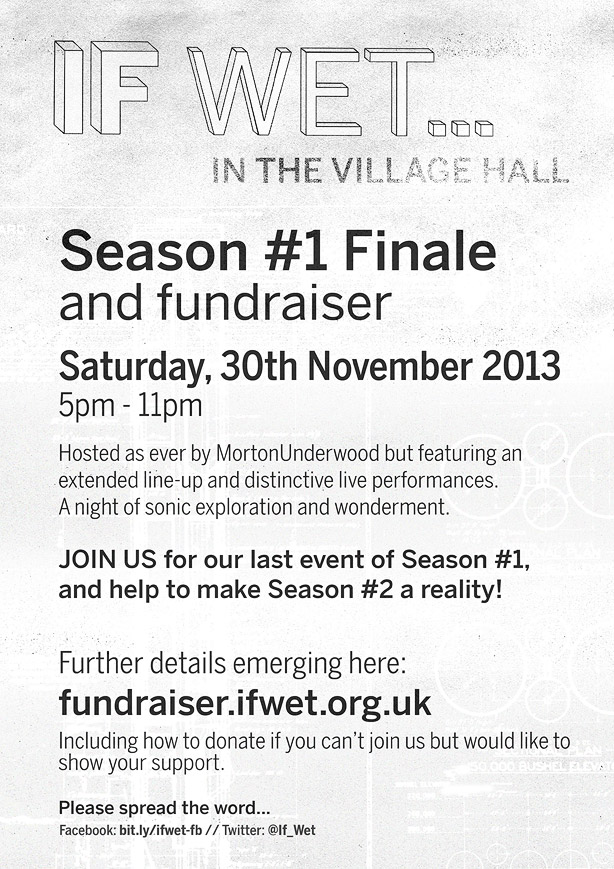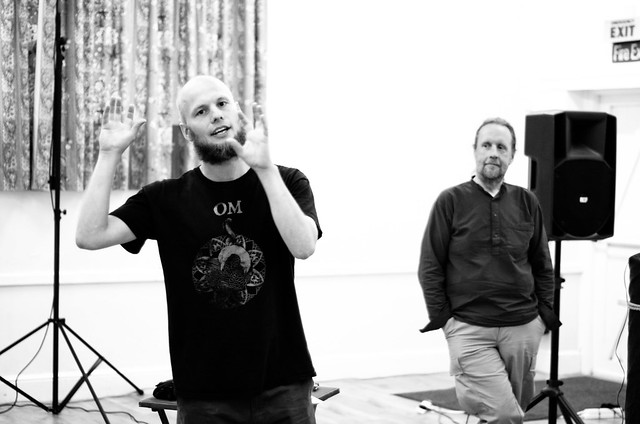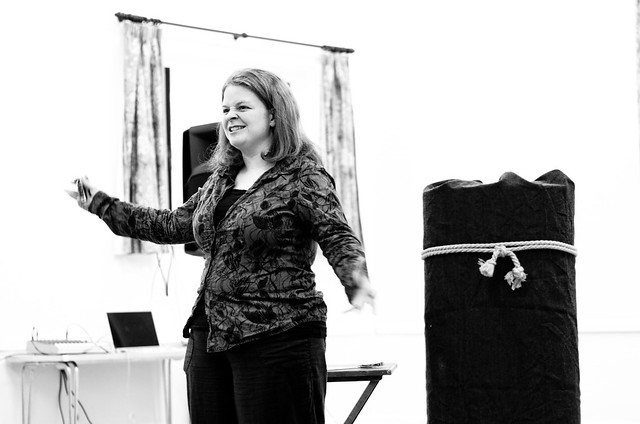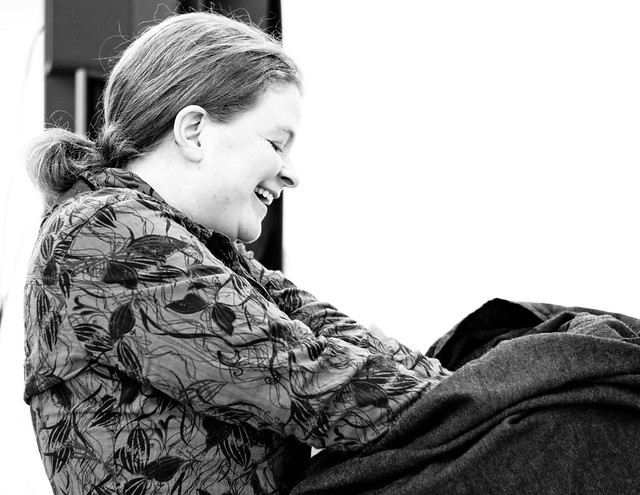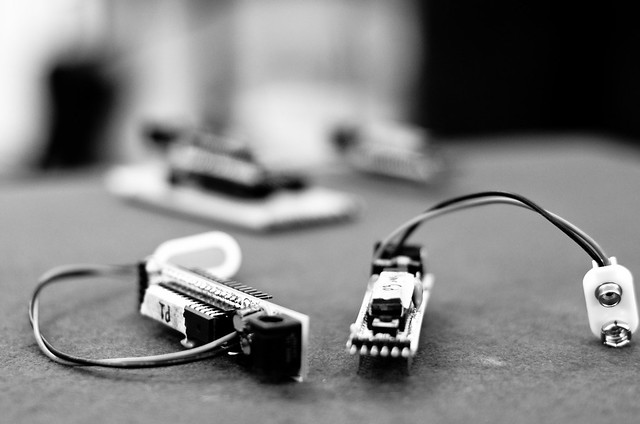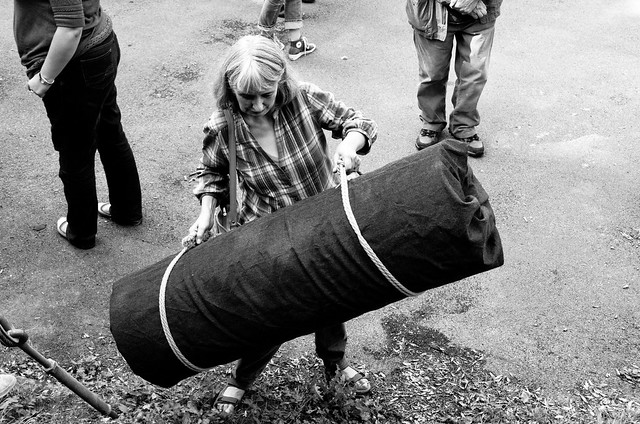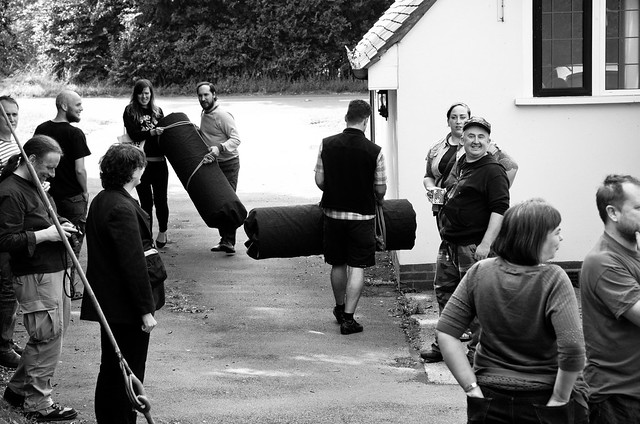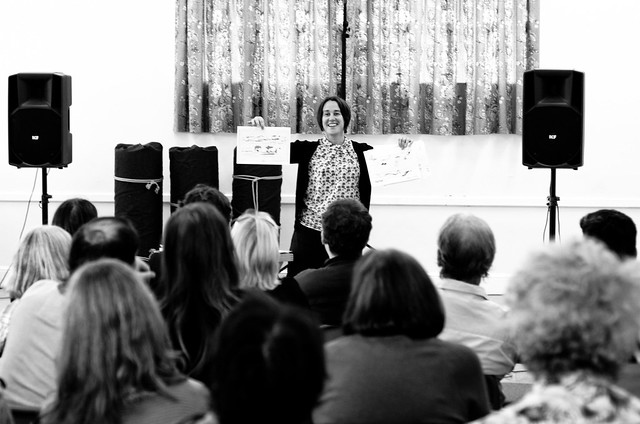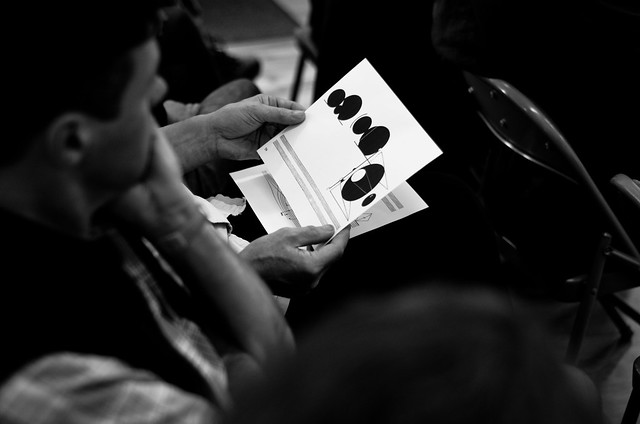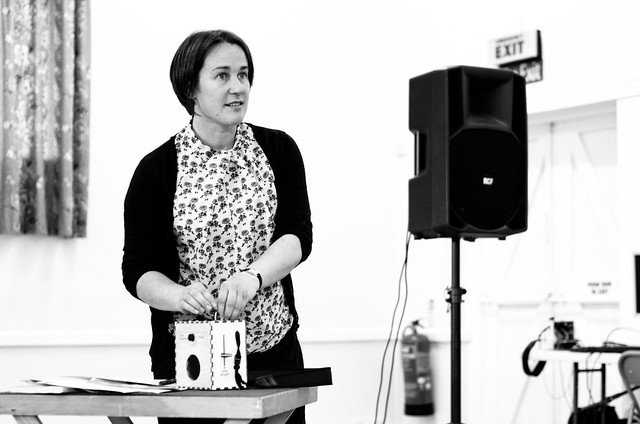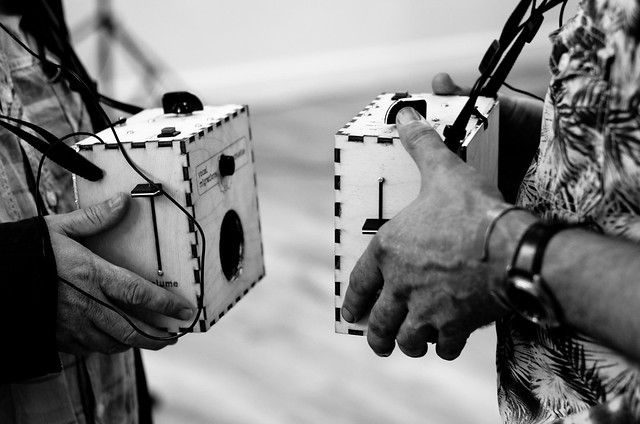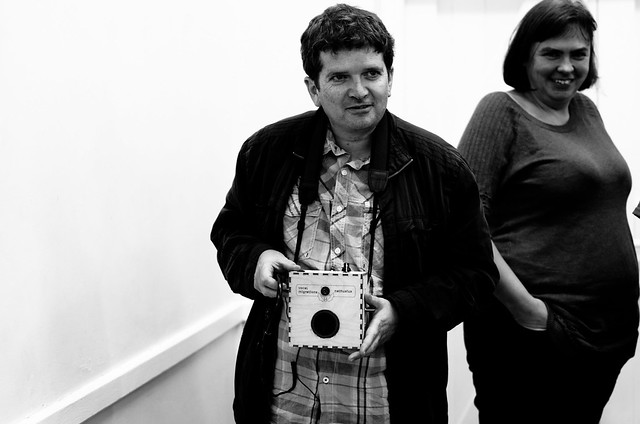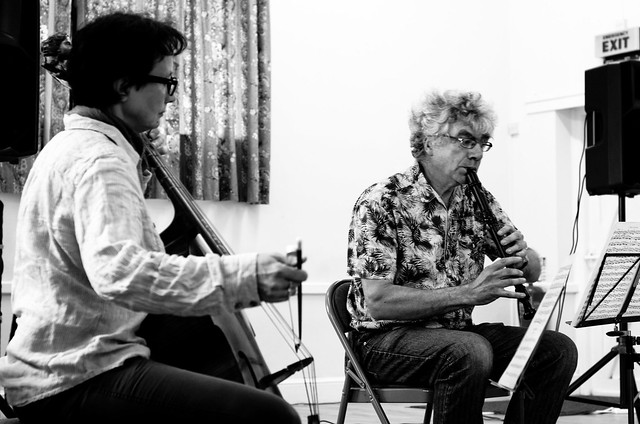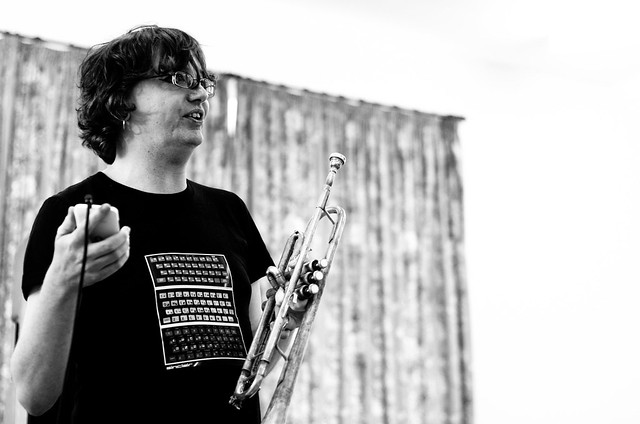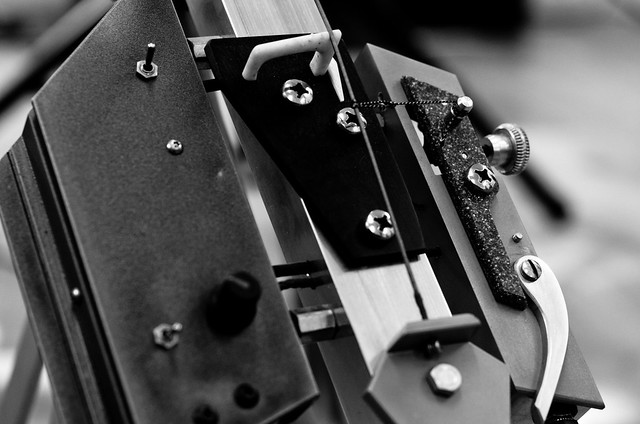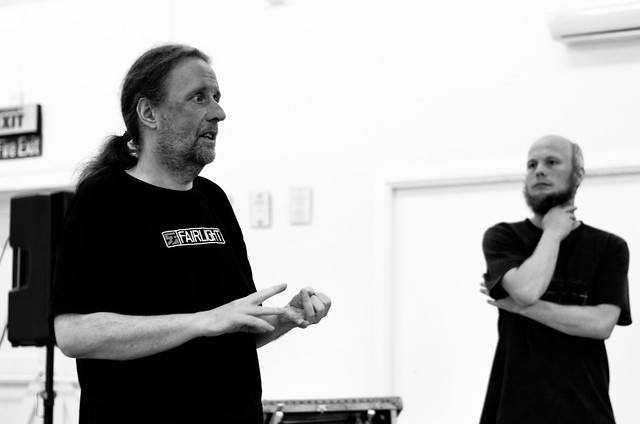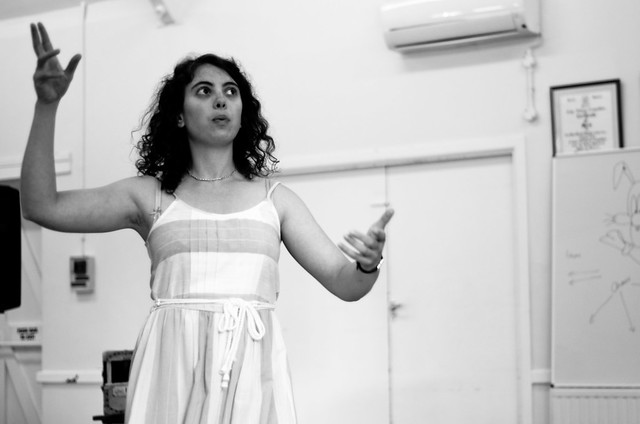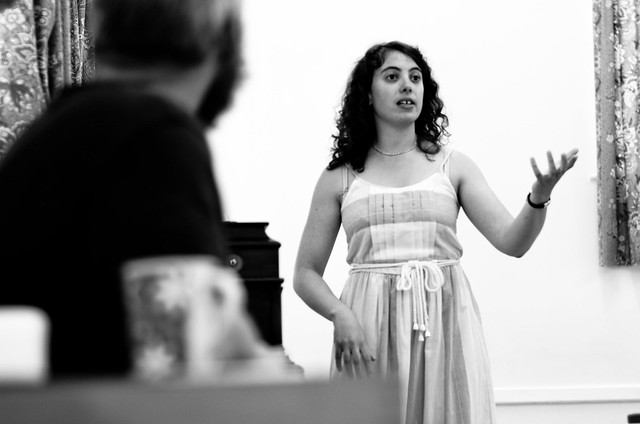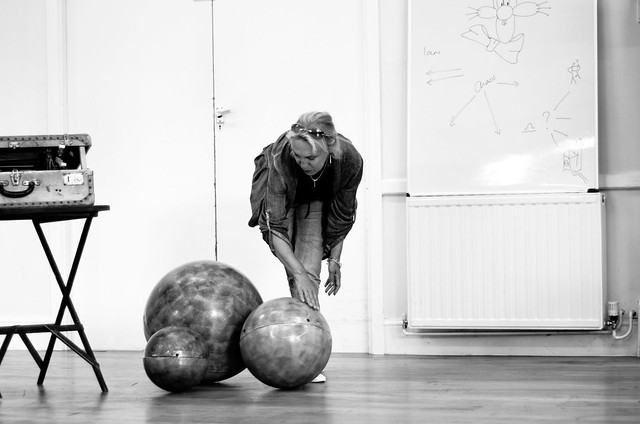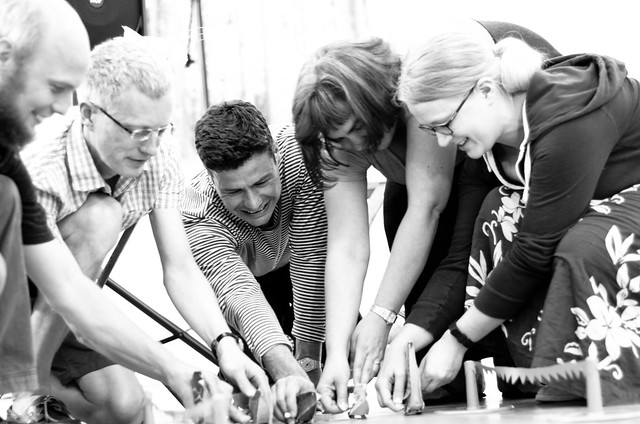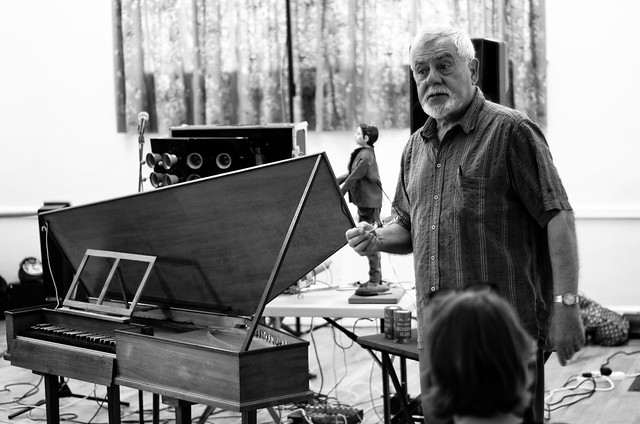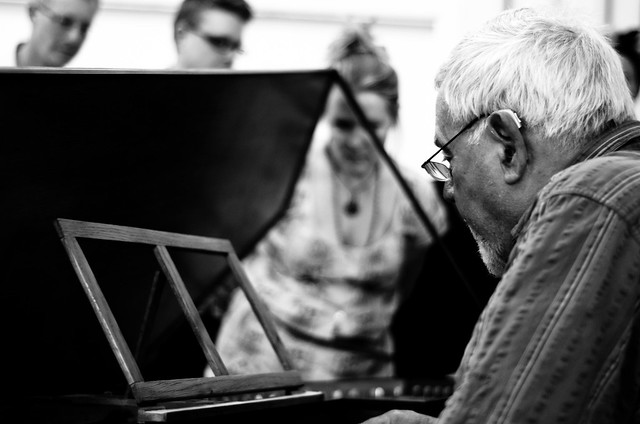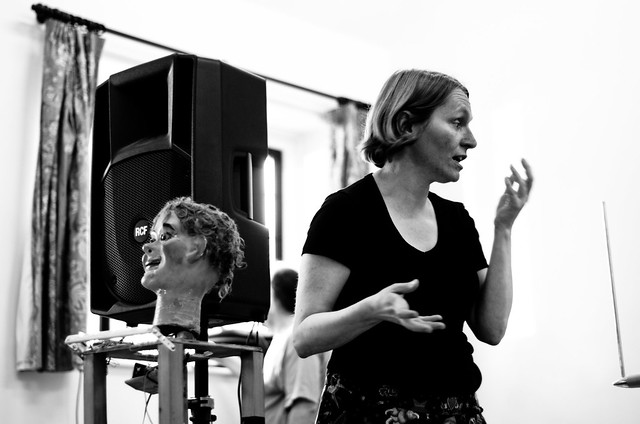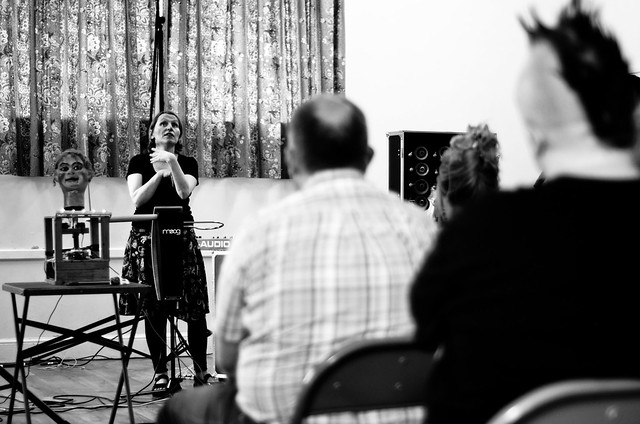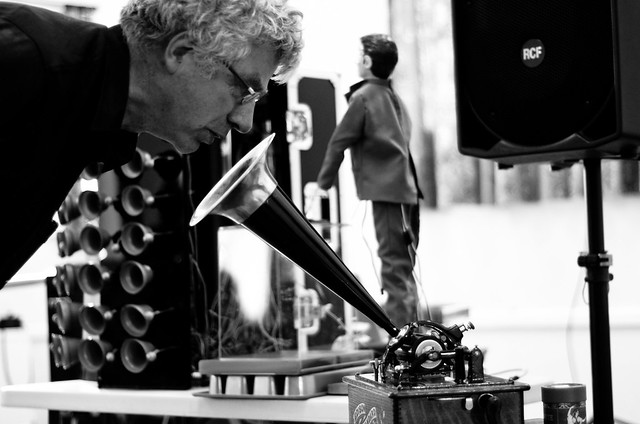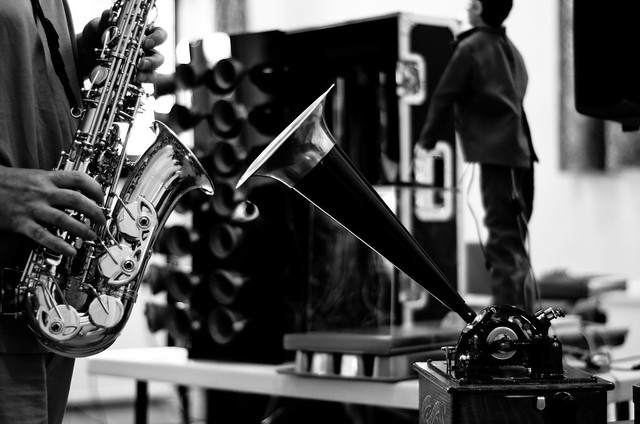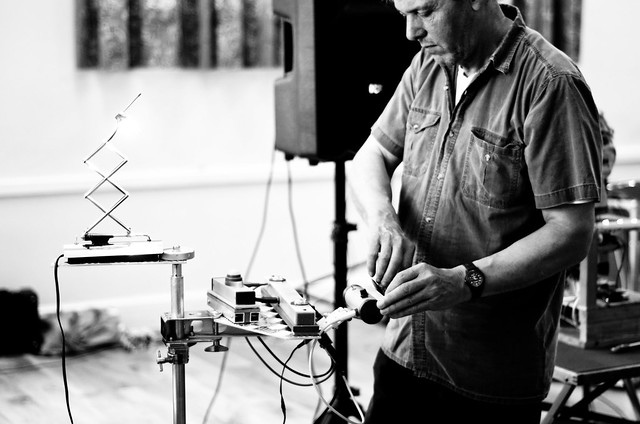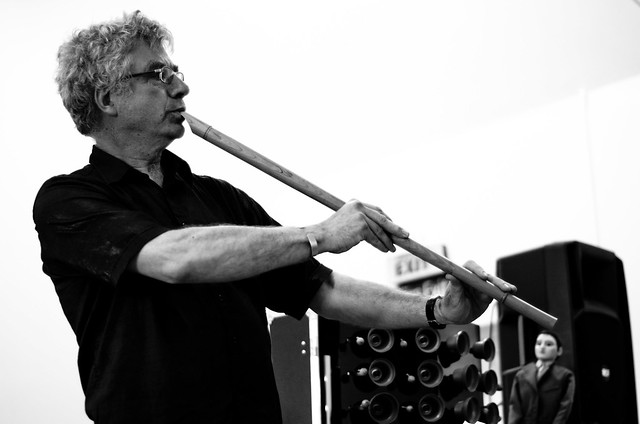Click poster to link to fundraiser page.
Tag Archives: worcestershire
If Wet #6 – documentation
If Wet #6 was an intimate affair but we the presentations were stellar. Thanks to those who came and to those who presented – you did us proud.
Here is the full audio recording, in two parts: Part1 / Part2
Here’s an overview of what went on, so you can access topics of interest:
Welcome
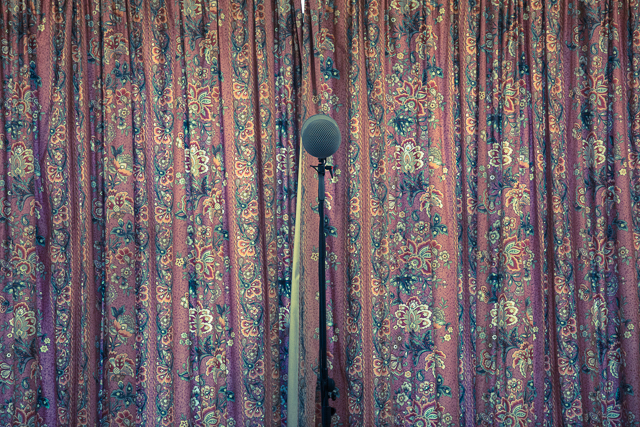
MortonUnderwood present…
[1:30 – 22:05 | Part 1]
“In April of this year I was appointed as the Artist-in-Residence at the Town Hall Symphony Hall in Birmingham, […] because they don’t do weird very well.”
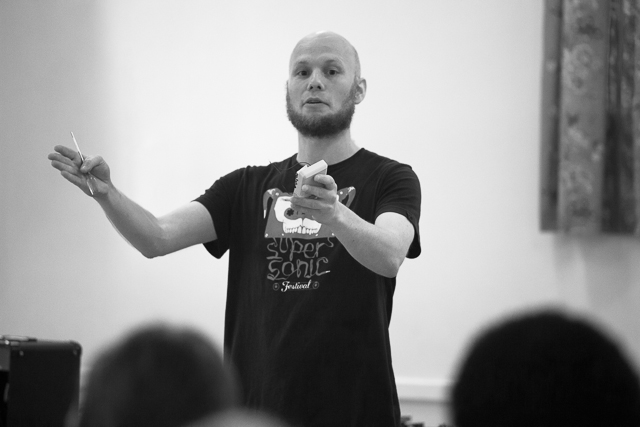
“The police were about to send in a robot […] to blow it up!”
[Sam discussing the first Sonic Graffiti piece to appear in Symphony Hall]
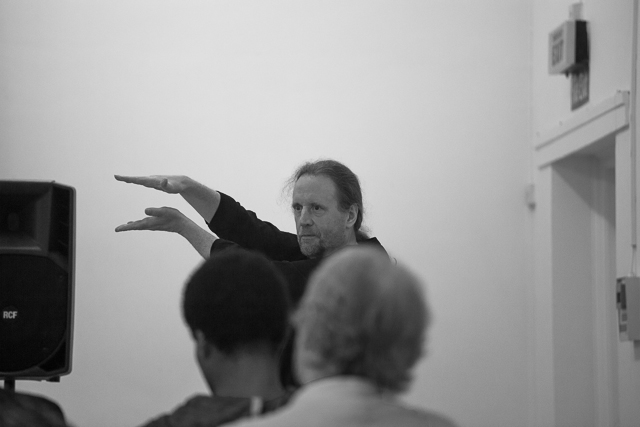
“We didn’t want to put labels saying this is the microphone, this is the record button, this is the loudspeaker; we wanted it to be something you could intuit.”
[David discussing our ‘A Word In Your Ear’ sound art piece]
“This is what happens when Sam and I have a 20 minute phone call about how we might put it in a box and what we might do about the user interface to make it easy to tell which bit to speak into. It’s quite worrying really that it winds up looking like something out of a David Cronenberg movie.”
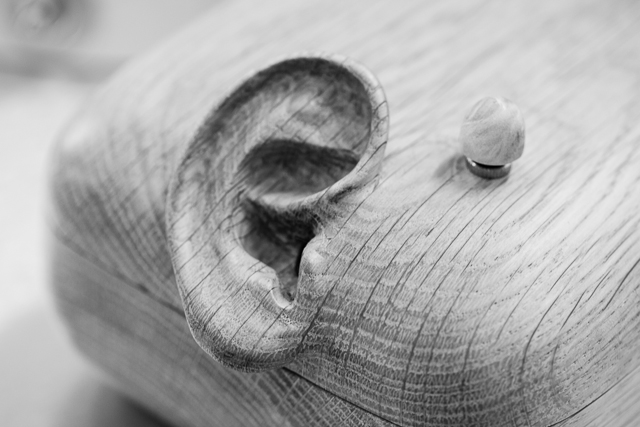
Soundhog
[22:20 – 1:01:25 | Part 1]
Ben Soundhog introduced his production techniques and work on his piece Whole Lotta Helter Skelter bastard pop piece.
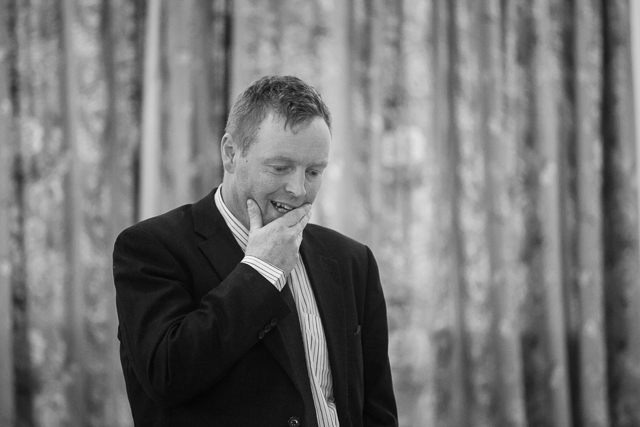
“I’ve always had this kind of fascination with messing up other people’s work, whether they like it or not.”
“I used to have an Atari 800 […] and you could have I think it was 7 seconds in total in samples, which you then split up into eight […] but there was enough there so you could start nicking notes off people’s records. “
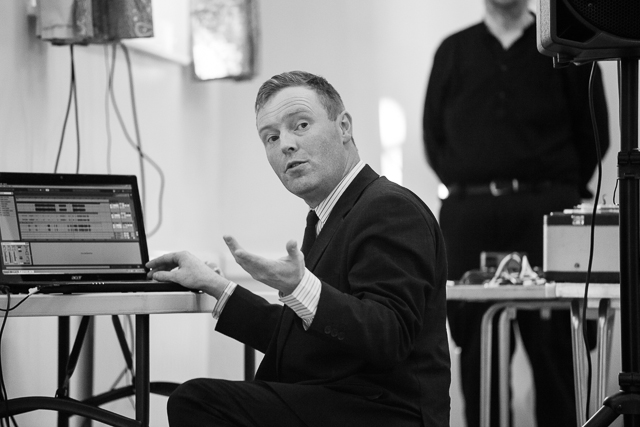
“He put out two singles out. They were both under the counter because they were, in terms of copyright, completely illegal.”
“It has gone into the mainstream. I hear stuff now using whacking great big chunks of other peoples music. That is a direct line from what we were doing; it did have an effect. We were always hoping that we’d get involved but of course what happens in the music industry, they take it themselves, they squish it down into something they can deal with and then they make the money out of it – then they are all happy.”
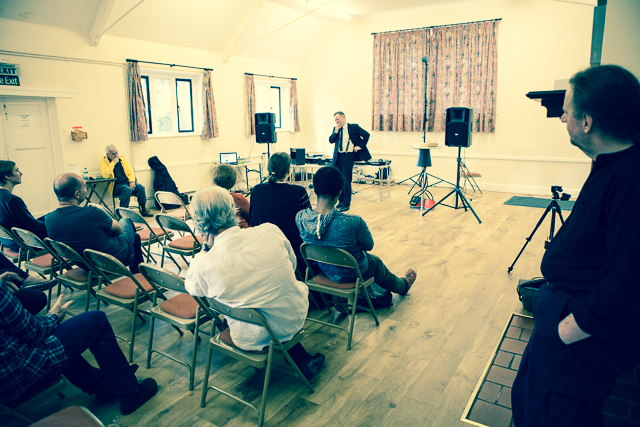
“This is why everybody would use stuff like the Beastie Boys because the vocal tracks were easily available; they were always on the B-side of the 12 inch single. […] But what has happened in recent years […] there were a couple of console games out, one called Rock Band and one called Guitar Hero, […] and this is how much clout the gaming industry developed, they actually were able to go to the record companies dig out the multi-track masters and use them as the basis of the samples in the game.”
“I know a lot of people don’t like you messing with things that are, you know, sacred but […] it’s not like the originals don’t exist any more. If you want to hear it as it is then it’s there for you but if you want just something a bit different then so long as it’s not a complete mess I think you should be able to have a go at this.”
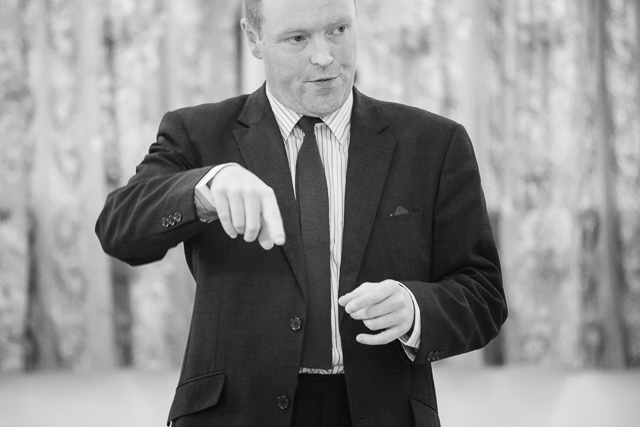
“To be honest I’ve never had much feedback from people but one of the guitar players out of Paul McCartney’s current touring band, which is fantastic, and Jimmy Page’s website had it on their front page, so they must be alright with it.”
Graham Dunning
[00:10 – 53:35 | Part 2]
Graham Dunning discusses and demonstrates his project Music by the Metre.
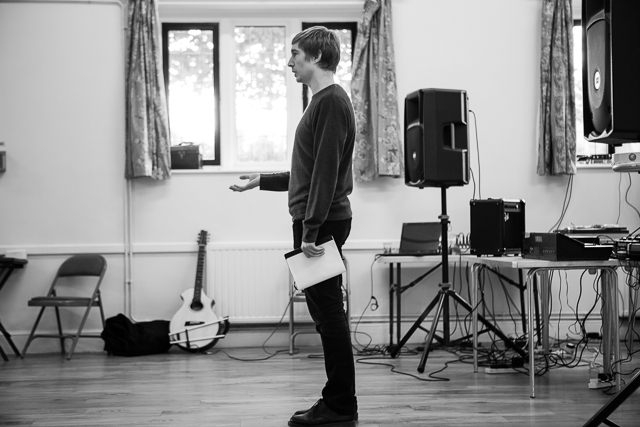
“It’s based on an idea by Giuseppe Pinot-Gallizio, […] he’s founding member of the situationist movement and Italian painter and also chemist and he came up with industrial painting, Painting by the Metre. […] My version is an audio homage to that technique.”
“I’ve got some machines which create some abstract music which I then use to fill up a spool of tape. […] So what I’ll do is set up the machines until it’s making something resembling something musical and then that’s the end of my intervention with it. […] I just leave it to run, fill up all of one side of the tape and then turn it over and fill up the other side.”
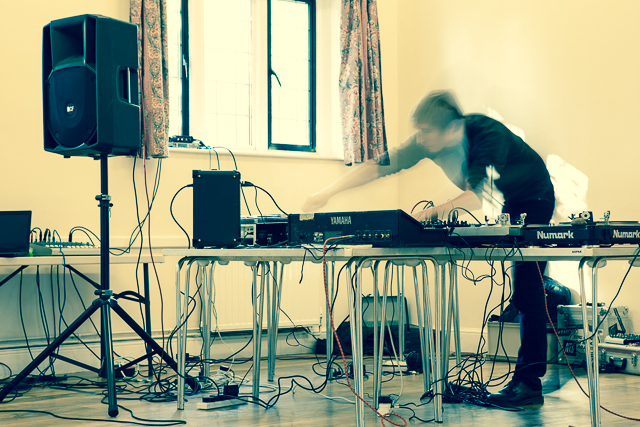
“The idea of vertical music is that it’s always changing but it’s always the same, and it’s never changing but it’s never the same.”
“I am going to set up one of these machines now today and as I go along I am going to describe what the sources are. So, I’ll just start doing that.”
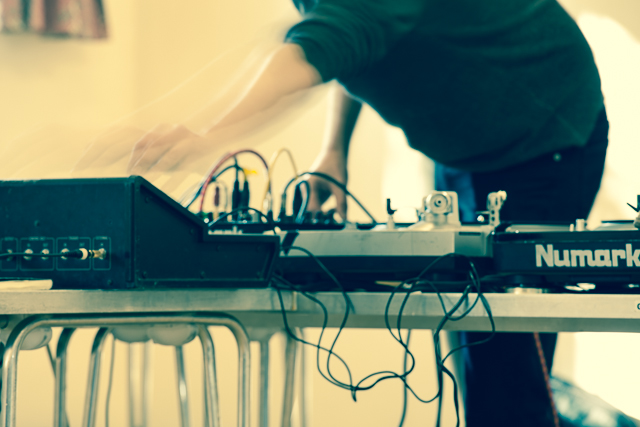
“I am also using a rock from just outside to hold the back end of the tonearm hopefully to make it loop on the same bit so it doesn’t spiral towards the middle.”
“Next up, I’ve got another turntable, which has been slightly butchered. […] I’ve taken out the original motor and have put in this kind of hobby motor, which has an adjustable speed on it. […] It goes from quite slow to being much faster than a normal record player.”
“Just trying to find a certain record. They are all unlabelled so I can’t remember which one it was. […] These are some dubplates that I got made of different field recordings I recorded myself. […] This is the sound of, I put some cymbals out in the rain each with a contact mic on.”
“The longer you listen to it the more you can hear.”
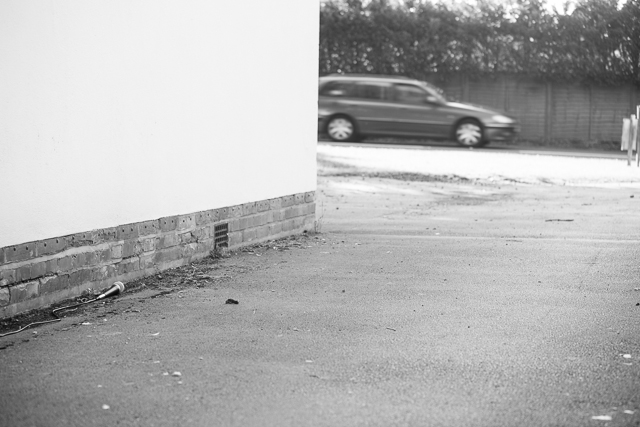
“This microphone is going out the window to get some traffic noise, or in a more academic way of putting it, live environmental sound.”
“There is quite a nice sweep to even regular traffic and I think in the context of quite a noise-heavy conversation between these different sounds it can change the composition. […] Over the course of the tape it’s actually different all the way through.”
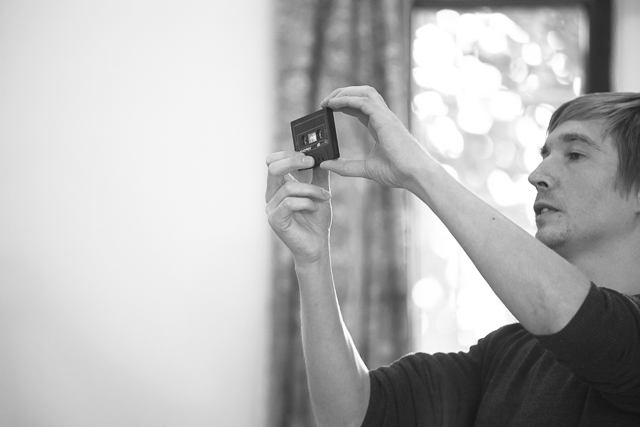
“One final element, inside this tape is a loop of cassette. […] This is from a remix I did for a saxophone player called Colin Webster. […] To remix one of his tracks I recorded it out to tape and then made up sixteen of these cassettes of little snippets and then played eight of them together. […] All slightly different, so they go in and out of sync together.”
“So, I am happy with that as the composition as it is going to be. The last bit to do is switch the tape on so, start it running and just leave it recording until it has filled both sides of the tape.”
“That’s it, it’s going and it’s out of my hands!.”
Run What Ya Brung
[54:54 – 01:03:54 | Part 2]
We run a regular feature at If Wet in which members of the audience are invited to bring along and demonstrate instruments, sound objects and sonic oddities. This month we had a great contribution from our regular contributor Richard Windley.
Richard Windley
[54:54 – 01:03:54 | Part 2]
“I’ve got a couple of quite nice handmade guitars that I’ve had for years and I’ve gradually got more and more frustrated with them. […] I thought maybe I’d better design one that I like […] so I designed and built this one a few years ago. […] This thing I’ve only added recently and it was an attempt to do this thing which Indian instruments and some European instruments like hurdy gurdies often have these things called sympathetic strings […] to broaden the range of the sound and to give me more sustain.”
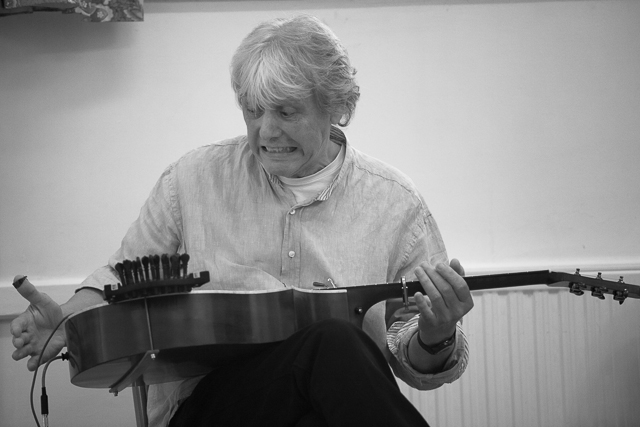
________________________________________
This is the first month Pete Ashton was unable to attend If Wet, so we don’t have the usual photographs on his Flickr BUT the wonderful George Benson stepped in to help, so thank you to him for the great photos of If Wet #6 used in this post.
Everyone who presented! Everyone who engaged and provided feedback. Everyone who came. Kavita for cooking, running the bar and tidying up. George for taking photographs.
If Wet #7 – Preview
Not long until If Wet #7; Sunday 27th October, 2-4pm. For our penultimate event of our first season we have a double-bill made up of the fabulous Helen White and Ian Rawes. JOIN US.
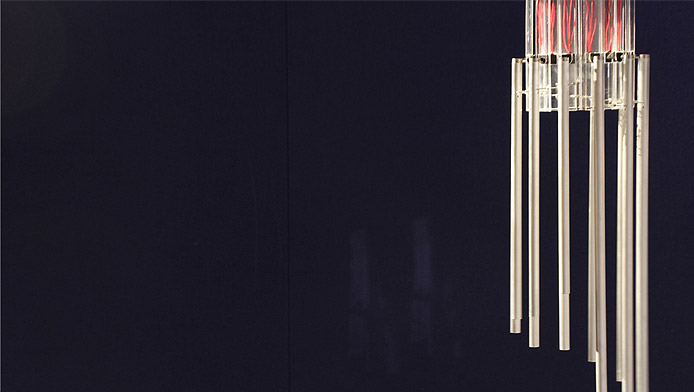
Inspired by recent media attention on solar flares and their effects on both positive and predicted negative events (the northern lights / technological disruption), Helen has been exploring creative ways to respond to this natural phenomena. She will be presenting her ‘solar-wind’ chime, a slowly-evolving resonating sculpture that responds in real-time to solar wind data collected from a satellite an hour away from earth, and she’ll be talking about working with complicated scientific principles and aesthetically bereft data sources that finally led her to listen to the sun.
By day Ian Rawes works in the sound archive at the British Library. He also runs London Sound Survey, a growing collection of Creative Commons-licensed sound recordings of places, events and wildlife in the capital.
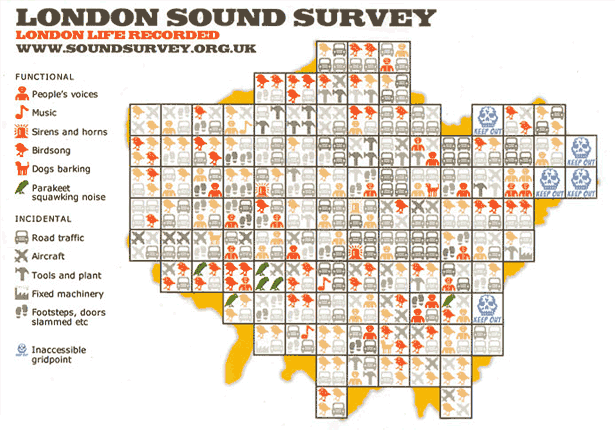
Ian will present a series of rarely-heard and never-heard archival recordings of vanished customs and daily life from London in the 1920s to the 1950s. Performing dogs, fortune tellers, Mike Stern the mayor of Petticoat Lane, lavender sellers, the singing sewer workers of the New Kent Road, Commander Daniel’s noise nuisances, Godfrey the bagpipe king and how London Zoo’s animals helped win the war.

Your hosts MortonUnderwood will be presenting the Sound Trolley they built for their recent artist residency at the Library of Birmingham.
We will also have our regular Run What Ya Brung section where anyone can do a brief, informal presentation of a sonic curiosity they might own or have built. Last month we had Richard Windley with and acoustic guitar (!) and harp combo he had made. Please JOIN US and contribute!
We will also have the usual yummy treats of home-made food, cakes and a local ale.
We hope to see you at Callow End Village Hall on Sunday the 27th October at 2pm! Tickets on the door.
—————————————
Oh and GET YOUR TICKETS NOW for our final event of our first season…a fundraiser for Season #2 no less! Or feel free to just donate to the cause. THANKS.
If Wet #5 – documentation
If Wet #5 was an unusually interactive event – people even went outside! We merely introduced this If Wet, with no further input. As ever our guests did us proud.
Here is the full audio recording, in three parts: Part1 / Part2 / Part3
Here’s an overview of what went on, so you can access topics of interest:
Welcome
“We set up If Wet […] as a bit of an antidote to the rock/blues nights there are throughout the region. We didn’t really feel there was a requirement for another one of those, so we decided to set this up.”
Nikki Pugh
[03:30 – 36:45 | Part 1]
Nikki Pugh introduced us to her work related to space and in particular her project Score for heavy objects and built environment.
“You know there is this whole drive to make technology smaller, more invisible, I just like the idea of going ‘Raggghh here it is!’, and I’ve got to carry it.”
[Nikki discussing her huge, heavy tubes used for this project]
“Inside them […] a micro-controller. As small computer, based on the Arduino platform. It’s three things really: it’s little PCBs with computer chips on them, it’s also software that is designed for artists to use, and a massive support community as well.”
“Inside here I’ve got two GPS receivers […] just the raw component. […] and a solenoid.”
“I view these as this kind of expanded, augmented sense, and use it to pull people’s attention to the built environment around them in different ways. […] I walked down New Street in Birmingham and because I was carrying this kind of equipment with me, suddenly noticed OH! there are trees all down New Street. Just because it made me raise my eye-line and look up. […] To try and make people tune in in different ways.”
“We’re just going to play you some of the data recorded on the walk. […] It’s the data themselves played back in the same way that they tap as you carry them around. […] It’s quite a direct link back to all that sweating and swearing.”
“Because it’s quite an abstract process I wanted to give you the opportunity to experience these yourselves.”
We all head outside with the Heavy Objects.
Kathy Hinde
[00:20 – 55:00 | Part 2]
Kathy Hinde discusses her project Vocal Migrations and the influences that led her to create the project.
“My background is working with music and visual art. I’ve never really wanted to decide between the two, I’ve always wanted to do both.”
“I got involved with an organisation called COMMA, which stands for Contemporary Music Making for Amateurs. That’s using the word amateur in its original meaning, which means for the love of it.”
“We were doing full orchestra pieces that were for wine glasses, fire extinguishers and you know, cellos and violins and pianos. […] The way that some of the composers chose to deal with this mixed ensemble of different abilities and maybe odd instrument combinations were really interesting. There were all sorts of different strategies.”
“One of the pieces was working with the composer Terry Riley. […] COMMA did the UK première of this piece with Terry Riley. […] Terry Riley was conducting. Not really realising the significance of how great this guy is; these were really formative experiences.”
“Moving on to my piece Vocal Migrations, I wanted to work with this idea of an open score.”
“There is so much in nature that creates incredible complex beauty that works with very, very simple rules.”
“It’s inspired by how bats use sound to see. […] There is a guy in America called Daniel Kish who is blind who has taught himself to echolocate using clicks.”
“It’s this idea of creating a situation or a behaviour for people to be immersed in. I think once you remove sight then there is something quite interesting happens in terms of having to trust this device, having to really listen […] and there is this point at which you really relax into it, and sort of go I’m OK, I can just use my listening to these sounds to make sense of my environment.”
Run What Ya Brung
[01:05:14 – 01:16:45 | Part 2]
We run a regular feature at If Wet in which members of the audience are invited to bring along and demonstrate instruments, sound objects and sonic oddities. This month we had a viola da gamba and recorder piece, an iPhone drone app and a bass string drone instrument.
Tim Cranmore and Ange
“We are just going to play a bit of music, if I dare mention the word.”
“The Viola da gamba came before all the other stringed instruments.”
Simon Gray
“A lot of us who make drone-based music will have an app called iTablaPro, which as well as having tabla drums has a tanpura, which generates Indian drones. When we are playing drone-based music we don’t always want to have the Indian sound, we might want an electronic sound.”
Richard Windley
“Then I came across this reference to an early instrument called a Trumpet Marine (sic). it was a single stringed instrument and rather than fret it you played the harmonics on it. And then I remembered something a lap steel player showed me and that is if you play a harmonic on an open string and then slide the bar up the harmonic actually follows the note, […] which surprised me.”
NOTE: the details at the end of Part 3 of the audio about our November fundraising event are incorrect. Keep your eye on THIS PAGE for details!
________________________________________
The full set of Pete’s photographs of If Wet are available here.
Everyone who presented! Everyone who engaged and provided feedback. Everyone who came. Kavita for cooking, running the bar and tidying up. Pete Ashton for taking photographs.
If Wet #7 – event poster
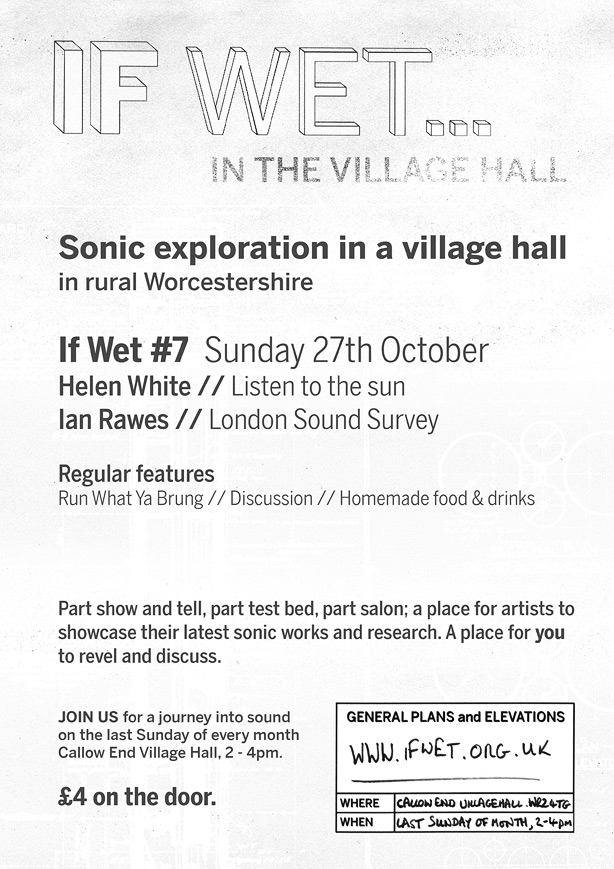
If Wet #6 – Preview
Not long now until our sixth If Wet; Sunday 29th September, 2-4pm. We have a double-bill for you made up of the fabulous Graham Dunning and Soundhog. JOIN US.
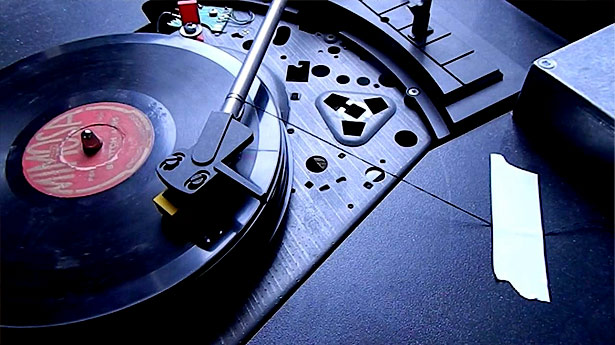
Graham will be presenting his Music by the Metre project, including a live build of a Music by the Metre piece. The project is an homage to situationist Giuseppe Pinot-Gallizio who made and sold abstract “painting by the metre”.
Each one is a system of sound making machines which will play indefinitely if left to run. The resulting audio is never changing but never the same: loops of different tempos mix with unstable drones and live environmental sound (a mic out of the window) to make a stable but evolving collage. For If Wet Graham will build one of these conglomerate machines and talk through this process.
Graham is also making a run of 10 recycled tapes individually recorded with a different Music by the Metre piece on each side and a handmade cover.
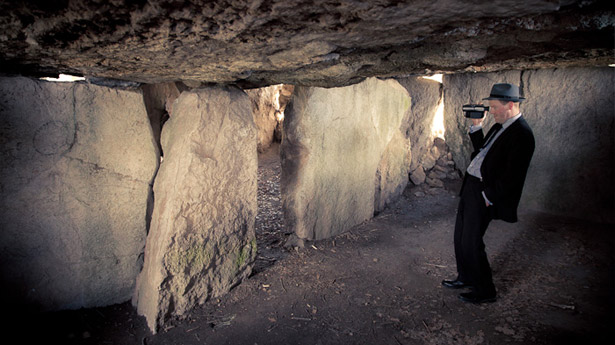
Soundhog (Ben) is a bit of an unknown quantity in the context of If Wet. In fact, we don’t know what he’ll be covering yet. It’s quite likely Ben doesn’t know yet either. BUT we do know that he has a wealth of knowledge, a rich history of making Bastard Pop hits, a fascination for antiquated recordings and technologies, and a near encyclopaedic knowledge of pop music. Soundhog doesn’t come out to play often so miss this at your peril.
Oh, and he only has a Wikipedia page: en.wikipedia.org/wiki/Soundhog

All being well, your hosts MortonUnderwood will be presenting a few projects they have been working on lately, as part of Sam’s artist residency at THSH Birmingham.
We will also have our regular Run What Ya Brung section where anyone can do a brief, informal presentation of a sonic curiosity they might own or have built. Last month we had a delightful performance of viola da gamba and recorder music, a phone based drone synthesis tool and a self-made, bass drone string instrument. Please JOIN US and contribute!
We will also have the usual yummy treats of home-made food, cakes and a local ale.
We hope to see you at Callow End Village Hall on Sunday the 29th September at 2pm!
If Wet #6 – event poster
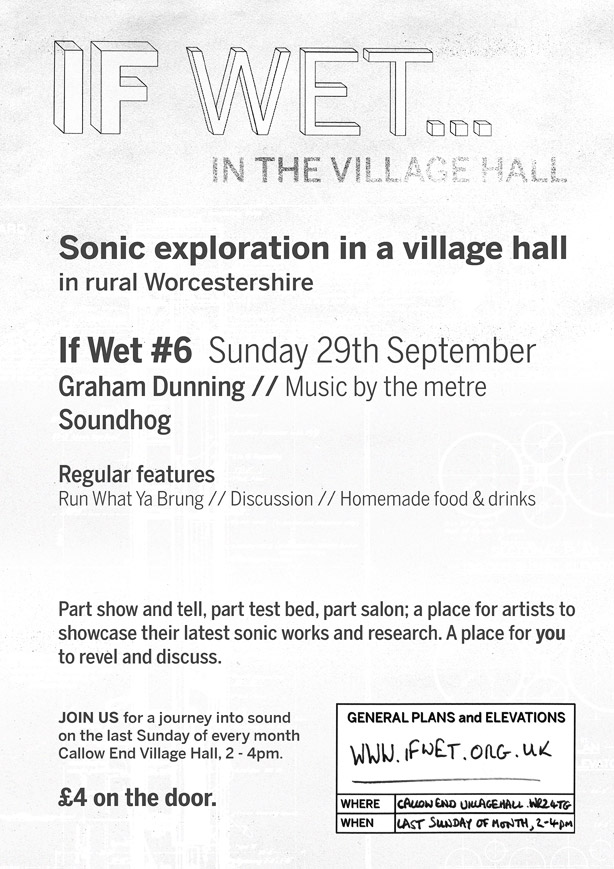
If Wet #5 – Preview
It’s just one week until If Wet #5 – Sunday 25th August, 2-4pm. We have a double-bill for you made up of the fabulous Kathy Hinde and Nikki Pugh. JOIN US.
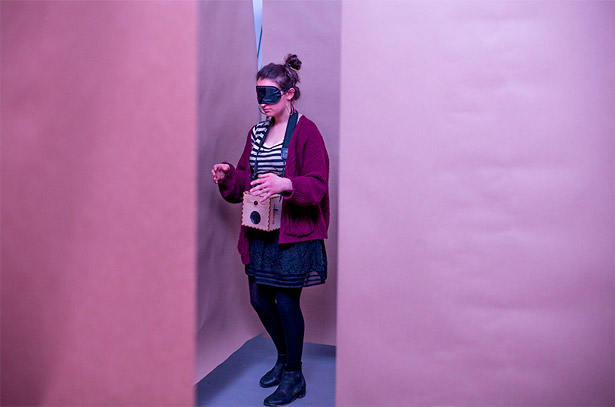
Kathy will be presenting her Vocal Migrations work, which combines live singing with electronically altered voices and is inspired by how bats ‘Echo-locate’ by using sound to ‘see’ their surroundings. The results and implications for music and performance are fascinating. Oh and Kathy has also been using the technology to help people navigate spaces without using their vision.
Come and experience this first hand!
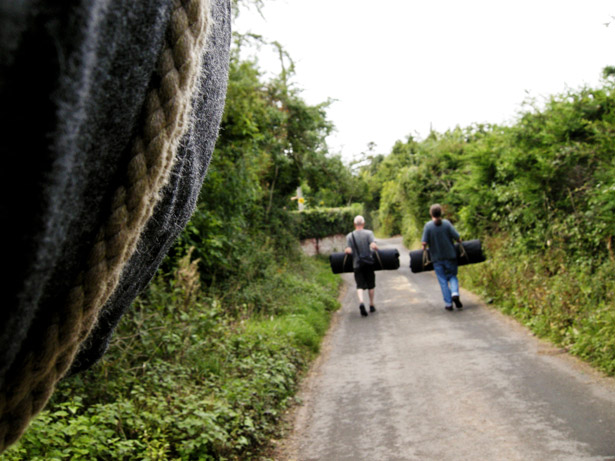
Nikki will be presenting her work Score for heavy objects and built environment. As I have experienced before from Nikki this project required some lugging around of odd GPS-enabled objects in preparation (see image above).
Come and hear the results!
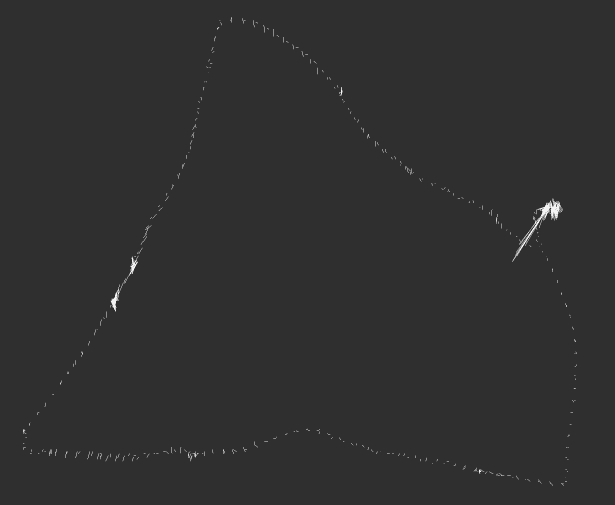
Your hosts MortonUnderwood are taking a bit of a back seat for this one, but you can never be quite sure what we might bring along!
We will also have our regular Run What Ya Brung section where anyone can do a brief, informal presentation of a sonic curiosity they might own or have built. Last month we had a (rare-as-rocking-horse-dung) Stroh guitar demonstrated by Richard Windley. Please JOIN US and contribute!
We will also have the usual yummy treats of home-made food, cakes and a local ale.
We hope to see you at Callow End Village Hall on Sunday the 25th August at 2pm!
If Wet #4 – documentation
If Wet #4 was another lively and well attended affair. As ever our guests did us proud.
Here is the full audio recording, in two parts: Part1 / Part2
Here’s an overview of what went on, so you can access topics of interest:
Welcome

“Actually I don’t know quite what to expect, which is one of the delights of doing If Wet!”
MortonUnderwood present…
[2:20 – 38:36 | Part 1]
World Listening Day
[2:20 – 7:00 | Part 1]
We started by introducing World Listening Day before going on to cover our release on RHP, entitled “Field Augmentation”.
“World Listening Day is to celebrate the practice of listening as it relates to the world around us, environmental awareness, and acoustic ecology.”
“I don’t know whether you’ve ever experienced a tube journey but it is phenomenally loud sometimes. […] For me those sorts of journeys are fascinating because you have people there who would never normally listen to that sort of sound. I would go to a concert that sounds rather like that […] but a lot of the people on the tube definitely wouldn’t.”
Field Augmentation
[7:00 – 38:36 | Part 1]
“We are very open to all of the chance sounds of course that appear in that setting; of which there are many.”
“[…] has the rather odd effect of sounding, as you’ll hear in a few minutes, like a scrapyard in a cathedral.”
“We are going to play this track in full. It’s about seven minutes long, so this is an endurance listening moment.”
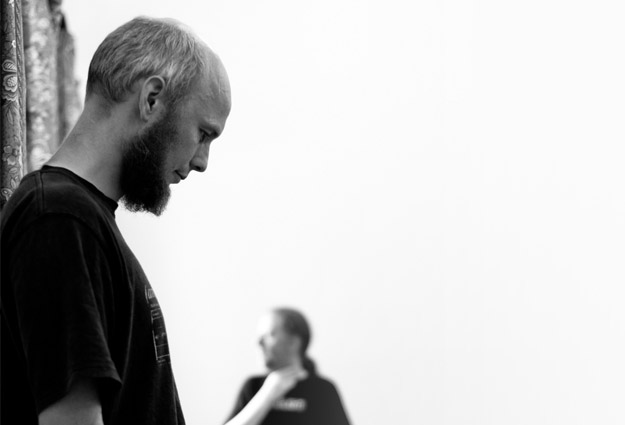
“It’s quite interesting that people seem to be paranoid if you take a camera out but to my surprise it’s the other end of the scale with microphones.”
[David talking about our experience when recording in the field]
“Why is it that one type of sound is acceptable in a certain environment and another type of sound isn’t?”
[Sam talking about the recording of his piece The Bells]
Laura Kriefman
[00:09 – 01:02:42 | Part 2]
Laura Kriefman introduced us to her work as choreographer, technologist and sound artist.
“I came up with this ludicrous theory […] which is that the more labour saving devices we’ve found, the less we have rhythm in our body.”
[Laura discussing why we find dancing increasingly awkward]
“So, I started this plan to liberate dance. […] I may never achieve it but I am going to keep trying. […] I started taking all our work we were doing and putting it slap bang in the environment people were spending time in, because I wanted to show the way people move every day is beautiful.”
“I wanted to create something which could be installed anywhere, whether it’s a country estate in the middle of a forest or on a street corner. […] The smallest one is small enough to hold and the largest one is large enough to sit on.”
[Laura talking about her Rolling Stones project]
“Would anybody like to touch a Rolling Stone?”
“That’s playing on that base of chaos. It’s a really unusual place to put yourself, to create a piece of work when you know it’s going to tour because you have to make something that’s tourable. So, it has to have a finite form in the programming, it has to last 45 minutes, it has to be suitable for these kinds of people […]”
[Laura discussing applying chaos in her latest work]
Moving on to her mechanical bird building, Laura outlined her approach to making a variety of birds for her latest exhibition.
“How can I create a way for people to look up?”
“Some of the sculptures have very real birds and some of them have imaginary birds, so of course honker birds do not exist, nor do fluster birds. I only brought two of the fluster birds, there will be six living in this nest.”
“All the birds are kenetic and hand manipulated because actually it’s more fun.”
“For the final one I need five volunteers!”
Run What Ya Brung
[01:05:14 – 01:16:45 | Part 2]
We run a regular feature at If Wet in which members of the audience are invited to bring along and demonstrate instruments, sound objects and sonic oddities. This month our regular contributor Richard Windley brought down his self-built Stroh guitar and amplifier. Once again, a remarkable rarity demonstrated in our village hall!
Richard Windley
[01:05:14 – 01:16:45 | Part 2]
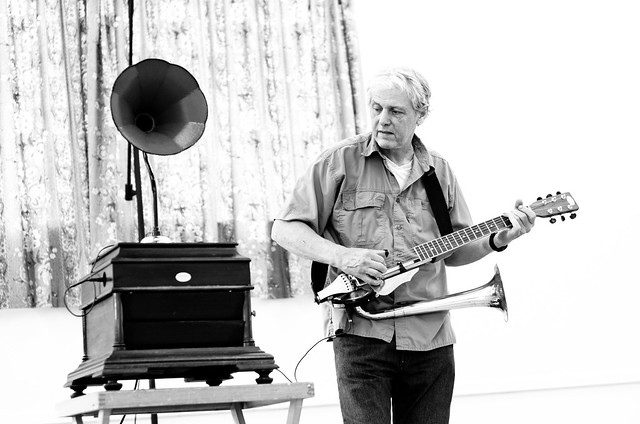
“The original Strohs were made out of some sort of nickle and aluminium alloys, which I guess were cutting-edge in the early nineteen hundreds. […] What Stroh did was he took part of the energy from the bridge and he pivoted it and brought this little arm down onto this very, very thin diaphragm, which is spun aluminium.”
Once again, the event ended with a lot of people sticking around to chat. One of the core aims of If Wet it to build links locally. We are confident there are people who share our interests out there and we’d like to hook up with them to form some sort of creative community. Another successful If Wet, see you at the next one!
________________________________________
The full set of Pete’s photographs of If Wet are available here.
Everyone who presented! Everyone who engaged and provided feedback. Everyone who came. Kavita and Gill for running the bar and tidying up. Pete Ashton for taking photographs.
If Wet #3 – documentation
Our third event was something of a triumph; it was lively and well attended, and as ever our guests did us proud!
Here is the full audio recording, in two parts: Part1 / Part2
Here’s an overview of what went on, so you can access topics of interest:
Welcome
“I am aware that some of you know this, as some of you have been to every single If Wet.”
MortonUnderwood present…
[2:52 – 17:20 | Part 1]
Foghorn Requiem recording
[6:36 – 09:31 | Part 1]
We played back a recording of the Foghorn Requiem David made when we travelled up to South Shields the weekend before If Wet #3. In many senses, this was the first of what could potentially become a series of If Wet sonic outings…
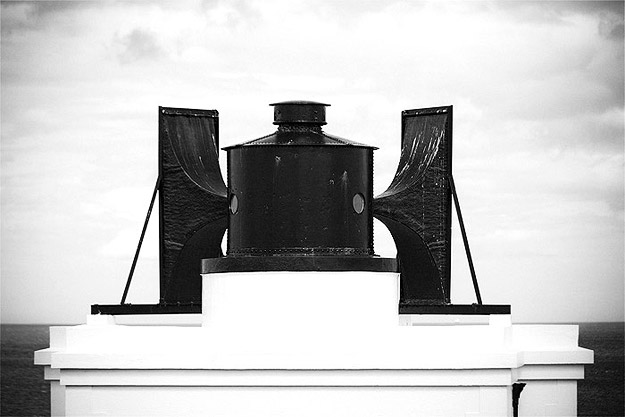
“This is the finale. There is a mournful chorale at the end from the brass bands and then it goes to the foghorn part and they discharge the full extent of the air chambers through the foghorn, so you hear how the sound meanders and peters out.”
“They explained that normally they wouldn’t run the foghorn like that but […] because it was the last time it was ever going to be sounded properly they ran the cylinders right until everything was completely depleted and run out, which is why it sounds particularly mournful.”
3D mouthpieces
[9:36 – 17:20 | Part 1]
Next up, we provided a brief update on our work building 3D mouthpieces. David described and demonstrated a working saxophone mouthpiece.
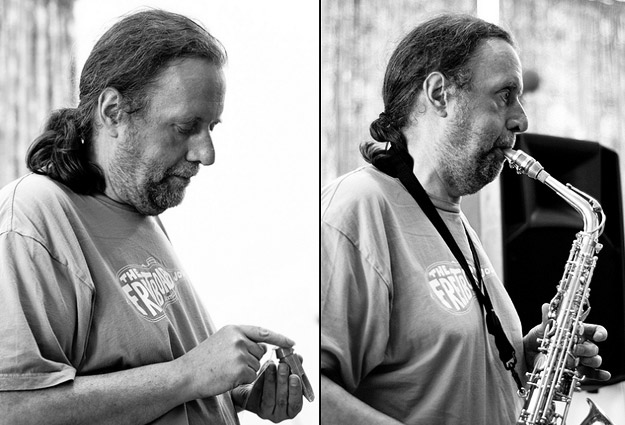
“The software has been upgraded now so the rafts are much easier to come off in one piece.”
“I now need to re-learn some of the fundamentals so I am getting to the stage where I am building models myself.”
[Sam reflecting on what’s next in terms of our exploration of 3D printing]
Paul John presents the clavichord
[17:25 – 44:00 | Part 1]
Paul John discusses the history of clavichords, which featured him playing in-the-round.
“It’s closer to the piano in its expressiveness than it is to the harpsichord.”
“In the 18th century it was often used in stacks, in pairs, […] so that an organist could practice at home.”
“It came out of, probably, ancient Greek methods of teaching mathematics, the acoustics of music from a single stretched string between two points and finding that if you put pressure on the string here and there that you get the fundamental and the octave.”
The courtesy and attentiveness of an If Wet audience is always high (they have to put up with us blathering on after all) but in this section it was particularly tangible. The volume of the clavichord is such that it rewards close listening. It was a delight to behold how enchanted everyone looked when Paul was playing.
Next up, Sarah Angliss.
Sarah Angliss
[1:07 – 52:31 | Part 2]
“That’s the act. I genuinely don’t know quite what it is; it sort of lives somewhere between cabaret and experimental electronics.
“You actually imbue notes with life by sort of expressing yourself as you play the note. And on the recorder you have a very good parallel with what is going on with the clavichord.
“There is a roboticist, Rodney Brooks who said “The real world is its own best model”. […] You might spend a vast amount of money on bell samples but in the end the best bell sample is a bell, situated in a room, vibrating away as only bells can do. […] We are actually quite hungry for physical, situated sound. That’s something I am very, very into.
As a keen saw player, Sarah moves on to discuss and demonstrate the saw as a musical instrument.

“It was like the skiffle instrument of its time. It was what you did if you couldn’t afford a violin.”
[Sarah talking about saws as a musical instrument]
The discussion moved on to focus on performance and Sarah’s thoughts on this.
“Coupling; which is the idea that when I see a performance I want to see what the performer is doing, coupled in some obvious way to what we are hearing. Otherwise I will switch off.”
“Why are we all here sharing this sound rather than just simply listening to it at home?”
“You’ll notice at the beginning that I tuned up in front of you. I didn’t actually need to tune up in front of you. I do that before I start a show so that people realise I am controlling the sound, and I am not reacting to the sound.”
[Sarah talking about helping the audience to appreciate the cause and effect when she plays Theremin]
“People credit him with a lot more intelligence than he actually has. […] I am actually using old magician’s tricks, lots of misdirections.”
[Talking about her robot, Hugo]
Sarah moves on to discuss and demonstrate her phonograph.
“This is entirely clockwork sound, there is no electronic amplification whatsoever.”
[Demonstrating a recording.]
“It has not escaped out notice that the voices of the dead can be reheard.”
[Quoting Scientific American response to the phonograph when originally demonstrated.]
Members of the If Wet audience were then given the opportunity to make a recording on the phonograph. A short piece was recorded featuring the voices of Tim Cranmore (Worcestershire Poet Laureate), Sarah Angliss and David Morton on saxophone.
“You would have to remove that stylus and replace it with a heavier one. And then you spoke into the horn, the horn would vibrate the stylus and it was heavy enough to cut the groove in the wax.”
[On how to record using a phonograph]
“It’s an artefact of the recording process. How you have to perform and the way it gets filtered. So, it makes you start to realise that this idea of how old voices sound is often the recording process rather than the people.”
[On how to record using a phonograph]
Run What Ya Brung
[41:32 – 57:00 | Part 2]
We run a regular feature at If Wet in which members of the audience are invited to bring along and demonstrate instruments, sound objects and sonic oddities. Sometimes we get lots of contributions, sometimes just one (so far never nought). This month was stellar, with fabulous contributions from Caroline Radcliffe, Richard Windley and Tim Cranmore.
Caroline Radcliffe
[54:00 – 1:03:58 | Part 2 | pre-amble by Sarah Angliss]
Caroline Radcliffe demonstrated some clog dancing and spoke about how many of the moves, from the 18th century, imitated the machinery in the cotton mills.
“I get really fed up with all these techno people claiming that they’ve only just invented something. What I want to show is that repetitive labour and sound was connected way before Detroit techno and all sorts of other processes.”
Richard Windley
[01:05:46 – 01:10:24 | Part 2]
We can’t get enough of Richard at If Wet and he was back with a bizarre self-made synth on a multi-layered stand.
“The band broke up after about four days.”
Tim Cranmore
[01:10:50 – 01:20:54 | Part 2]
Tim is a local recorder maker and maker/player in the UK Vegetable Orchestra. This was his second contribution to If Wet, where he covered three-holed pipes, including two rare bass pipes.
“In the Mary Rose they found several musical instruments. […] The bass three-holed pipe they found was the only one that had ever been seen, and this is a copy of a bass three-holed pipe that was found in the Mary Rose.”
Once again, the event ended with a lot of people sticking around to chat. One of the core aims of If Wet it to build links locally. We are confident there are people who share our interests out there and we’d like to hook up with them to form some sort of creative community. Another successful If Wet, see you at the next one!
________________________________________
The full set of Pete’s photographs of If Wet are available here.
Everyone who presented! Everyone who engaged and provided feedback. Everyone who came. Kavita and Gill for running the bar and tidying up. Pete Ashton for taking photographs.

